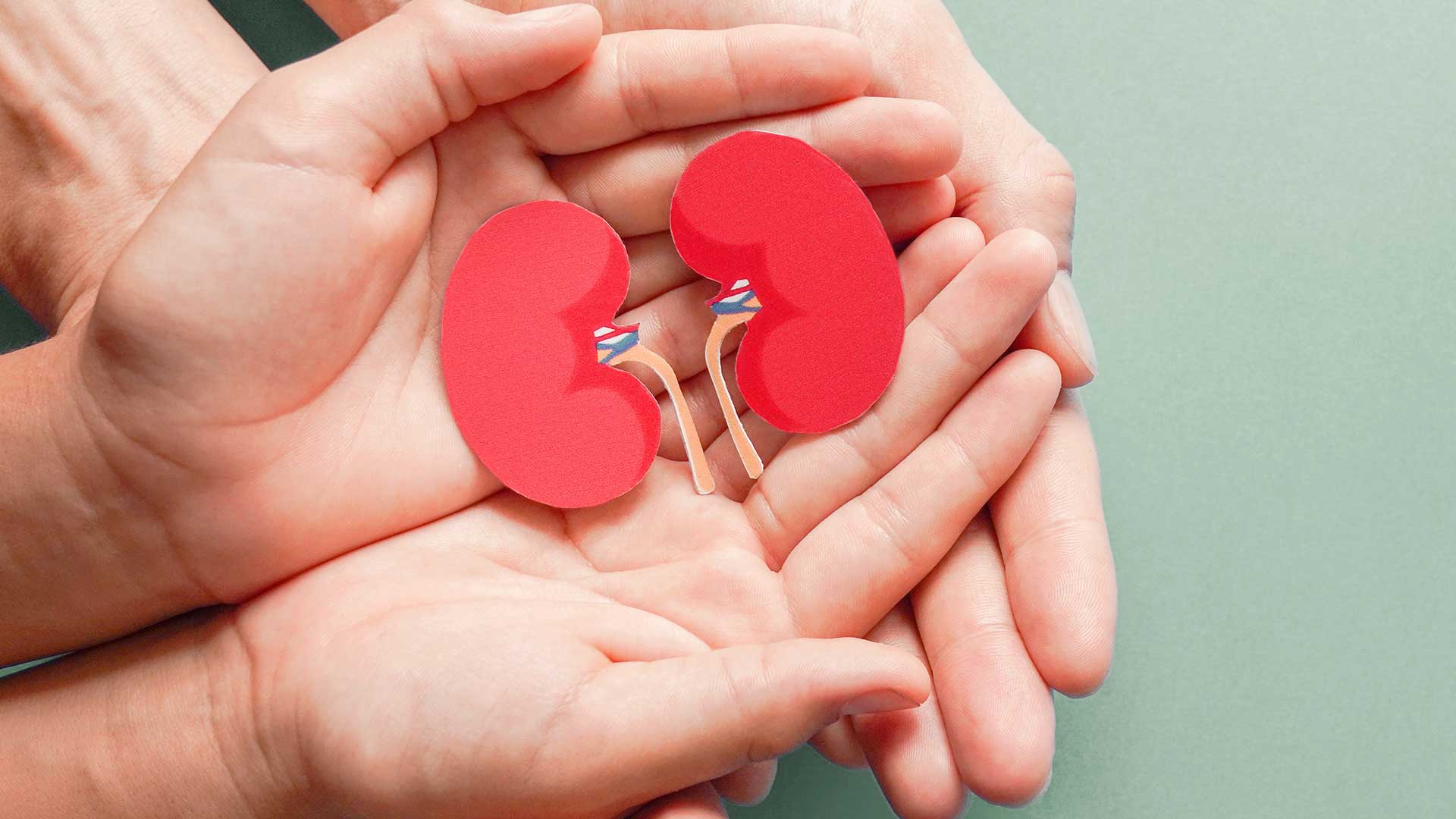

Featured
How Much Salt Before Workout
Modified: August 19, 2023
Discover how much salt you should consume before your workout to optimize performance and enhance recovery. Read our featured article for expert tips and advice.
Introduction
Welcome to the world of fitness and exercise! Whether you are a seasoned athlete or just starting your fitness journey, understanding how nutrition plays a crucial role in optimizing your performance is essential. Among the various aspects of nutrition, one often overlooked factor is electrolyte balance. Electrolytes are minerals in your body that help maintain proper fluid balance, nerve function, and muscle contractions. One key electrolyte that is often discussed in relation to exercise is sodium, primarily found in salt.
Sodium plays a vital role in regulating fluid balance, as it helps retain water in your body, preventing dehydration during exercise. However, there is often confusion regarding the appropriate amount of salt to be consumed before a workout. While maintaining the right sodium levels is important, excessive intake can lead to health concerns. Therefore, it is crucial to strike a balance and find the optimal amount for your specific needs.
In this article, we will delve into the relationship between salt intake and exercise, exploring the benefits and potential risks, as well as providing recommendations for finding the ideal salt consumption before a workout. By understanding how salt affects your body during exercise, you can make informed decisions to enhance your performance and overall well-being.
The Importance of Electrolyte Balance
Electrolytes are essential minerals that help maintain proper cellular function in your body. They are involved in various physiological processes, including muscle contractions, nerve transmissions, and maintaining fluid balance. When it comes to exercise, maintaining electrolyte balance becomes even more crucial due to increased sweat loss and fluid shifts in the body.
During a workout, your body loses electrolytes through sweat, primarily sodium, potassium, and chloride. If these electrolytes are not replenished, it can lead to imbalances that can negatively impact your performance and overall health.
Electrolyte imbalances, such as low sodium levels (hyponatremia), can result in symptoms like muscle cramps, nausea, confusion, and even seizures. On the other hand, excessive electrolyte loss without adequate replacement can lead to dehydration and hinder your ability to perform at your best.
Proper electrolyte balance is essential for maintaining optimal athletic performance, as it ensures that your muscles can contract and relax efficiently. It also helps to prevent muscle fatigue and cramping, allowing you to exercise for longer periods without discomfort.
Furthermore, maintaining electrolyte balance aids in fluid regulation within your body. When electrolytes are in balance, your body can effectively regulate the movement of water between cells, tissues, and the bloodstream. This helps to maintain hydration levels and prevent dehydration, which can negatively impact your exercise performance.
Incorporating the right amount of electrolytes, including salt, into your pre-workout routine is key to maintaining proper electrolyte balance. By doing so, you can optimize your performance, enhance your endurance, and recover more efficiently post-workout.
Understanding Sodium and Its Role in Exercise
Sodium is a vital electrolyte that plays a significant role in exercise performance. It is involved in several important functions related to exercise, including maintaining fluid balance, supporting muscle contractions, and facilitating nerve impulses.
When you exercise, especially in intense or prolonged workouts, your body produces sweat to regulate its temperature. Sweat contains electrolytes, including sodium, which is released from your body along with water. This loss of sodium can lead to imbalances and affect your overall performance.
One of the primary roles of sodium in exercise is maintaining fluid balance. Sodium helps retain water in your body, preventing excessive fluid loss during exercise. It works in conjunction with other electrolytes, such as potassium and chloride, to ensure that the fluid levels inside and outside your cells are balanced.
In addition to fluid balance, sodium is responsible for facilitating proper muscle contractions. It aids in the transmission of nerve impulses from your brain to your muscles, allowing them to contract and relax effectively. This is particularly important during activities that require repetitive movements or intense bursts of energy.
Furthermore, sodium plays a crucial role in maintaining overall body function during exercise. It helps regulate blood pressure and volume, ensuring that oxygen and nutrients are delivered efficiently to your muscles. This can enhance your endurance and improve your exercise performance.
It’s important to note that the amount of sodium lost through sweat can vary from person to person, depending on factors such as genetics, exercise intensity, duration, and environmental conditions. Therefore, understanding your sodium needs and replenishing them appropriately is essential for optimal performance.
By incorporating the right amount of sodium into your pre-workout routine, you can ensure that your electrolyte levels are balanced, and your body is prepared to perform at its best. However, it’s crucial to strike a balance and not overconsume sodium, as excessive intake can have negative health consequences.
The Relationship between Salt Intake and Fluid Balance
Salt, which is composed of sodium chloride, is a commonly used seasoning in our daily meals. It not only adds flavor to our food but also plays a crucial role in maintaining fluid balance in the body, especially during exercise.
When we consume salt, the sodium in it enters our bloodstream and helps regulate fluid levels. It facilitates the process of fluid retention, preventing excessive water loss through urine and sweat. This is particularly important during exercise when the body undergoes increased fluid shifts and sweat production.
During a workout, the body loses water and electrolytes through sweat, including sodium. If not adequately replenished, this loss can lead to dehydration and imbalances in fluid levels. Consuming salt before exercise can help maintain proper fluid balance by retaining water in the body.
Salt intake before a workout can also stimulate thirst, which encourages proper hydration. When sodium levels in the body rise, it triggers a thirst response, prompting you to drink more fluids. This can help prevent dehydration during exercise and ensure that your body remains properly hydrated.
Furthermore, consuming salt before exercise can have a positive impact on performance. When the body is adequately hydrated and maintains the right fluid balance, it can function optimally. This can lead to improved endurance, reduced muscle cramping, and enhanced overall exercise performance.
However, it’s important to note that the relationship between salt intake and fluid balance is not a one-size-fits-all situation. The amount of salt needed before exercise can vary depending on factors such as individual sweat rate, exercise intensity, duration, and environmental conditions.
It’s recommended to experiment with salt intake during training sessions to determine the right amount that works best for you. It’s also essential to listen to your body and adjust salt intake accordingly. If you notice that you are experiencing excessive thirst or retaining too much water, you may need to adjust your salt intake.
Overall, the relationship between salt intake and fluid balance is interconnected, particularly during exercise. Consuming salt before a workout can help maintain proper hydration and fluid balance, leading to better performance and overall well-being.
Benefits of Consuming Salt Before a Workout
When it comes to optimizing your exercise performance, consuming salt before a workout can offer several benefits. Let’s explore some of the advantages of incorporating salt into your pre-workout routine:
1. Hydration: Consuming salt before exercise helps maintain proper fluid balance in the body. Salt aids in water retention, preventing excessive fluid loss through sweat and urine. This can help prevent dehydration and ensure that you stay properly hydrated during your workout.
2. Electrolyte Balance: Salt contains sodium, which is an essential electrolyte. By consuming salt before a workout, you support the replenishment of sodium levels in your body. This helps maintain optimal electrolyte balance, enhancing muscle contractions, nerve function, and overall performance.
3. Enhanced Endurance: With proper hydration and electrolyte balance, consuming salt before exercise can improve your endurance levels. It allows your muscles to function efficiently, reducing muscle fatigue and cramping. This can enable you to exercise for longer periods, maximizing your training potential.
4. Mental Focus: Salt plays a role in the transmission of nerve impulses, including those involved in cognitive function. Consuming salt before a workout can support mental focus and alertness, allowing you to stay mentally engaged during your exercise session.
5. Reduced Risk of Hyponatremia: Although hyponatremia is rare, it is a serious condition characterized by low sodium levels in the blood. Consuming salt before exercise helps maintain adequate sodium levels, reducing the risk of hyponatremia, particularly during prolonged or intense workouts.
6. Improved Recovery: Salt consumption before a workout can aid in post-exercise recovery. Replenishing sodium levels can help restore electrolyte balance, promoting proper muscle repair and reducing the risk of delayed onset muscle soreness (DOMS).
7. Taste and Palatability: Let’s not forget that consuming salt before a workout can enhance the taste and palatability of your pre-workout meals or snacks. Salt adds flavor and can make your pre-workout fuel more enjoyable, motivating you to stick to your exercise routine.
While these benefits are significant, it is essential to note that salt intake should be individualized based on factors such as sweat rate, exercise intensity, and personal preferences. It’s always a good idea to consult with a healthcare professional or registered dietitian to determine the appropriate amount of salt for your specific needs.
Incorporating salt into your pre-workout routine can be a simple and effective way to support hydration, electrolyte balance, and exercise performance. However, it’s important to strike a balance and avoid excessive salt consumption, as it can have adverse health effects.
How Much Salt Should You Consume Before a Workout?
While consuming salt before a workout can offer benefits, it’s crucial to find the right balance and determine the appropriate amount of salt to consume. The ideal salt intake depends on various factors, including individual sweat rate, exercise intensity, duration, and environmental conditions.
One way to estimate your sodium needs is to consider your sweat rate. Sweating is an individual process, and some people naturally have a higher sweat rate than others. If you tend to sweat profusely during exercise, you may need to consume more salt to replenish the sodium lost through sweat.
A general guideline for sodium intake before a workout is to consume around 500 to 1,000 milligrams of sodium, which is roughly equivalent to 1/4 to 1/2 teaspoon of salt. However, it’s important to note that this is a starting point, and individual needs may vary.
Listening to your body and experimenting with different salt intake levels during training sessions can help you determine the right amount for you. For some individuals, especially those engaging in high-intensity or long-duration workouts, a higher sodium intake may be necessary to maintain electrolyte balance.
It’s essential to pay attention to how your body responds to different levels of salt intake. If you experience excessive thirst, bloating, or other discomforts, you may be consuming too much salt. On the other hand, if you feel fatigued, cramp easily, or have difficulty maintaining energy levels, you may need to increase your salt intake.
Keep in mind that salt intake should always be combined with proper hydration and a well-rounded diet that includes other important nutrients. It’s recommended to consult with a healthcare professional or a registered dietitian who can provide personalized guidance based on your specific needs and goals.
Remember, finding the right amount of salt to consume before a workout is a process of trial and error. By paying attention to your body and making adjustments as needed, you can find the optimal salt intake that supports your exercise performance and overall well-being.
Potential Risks and Considerations of Salt Intake Before Exercise
While consuming salt before exercise can offer benefits, it’s important to be aware of potential risks and considerations associated with salt intake. Here are some important points to keep in mind:
1. Excessive Salt Intake: Consuming too much salt can lead to health concerns, such as high blood pressure, increased risk of cardiovascular diseases, and fluid retention. It’s crucial to strike a balance and avoid excessive salt intake, especially if you have pre-existing health conditions.
2. Individual Variations: Sodium needs vary from person to person, depending on factors such as sweat rate and exercise intensity. What works for one individual may not work for another. It’s important to listen to your body’s cues and adjust your salt intake accordingly.
3. Hydration Status: While salt is important for maintaining fluid balance, it should not be solely relied upon for hydration. Hydration should primarily be achieved through consuming adequate amounts of water or electrolyte-rich fluids.
4. Pre-existing Medical Conditions: Individuals with certain medical conditions, such as kidney disease or hypertension, may need to monitor their salt intake more closely. It’s crucial to consult with a healthcare professional or a registered dietitian for personalized advice based on your specific health needs.
5. Consider Other Nutrients: While sodium is an important electrolyte, it’s vital to consider other essential nutrients needed for exercise performance, such as potassium, magnesium, and calcium. A well-balanced diet that incorporates a variety of nutrient-rich foods is key for overall health and exercise optimization.
6. Salt Sensitivity: Some individuals may be more sensitive to the effects of salt, experiencing symptoms like bloating, fluid retention, or increased blood pressure. It’s important to monitor how your body responds to salt intake and make adjustments accordingly.
7. Individualized Approach: All individuals are unique, and what works for others may not work for you. Experimentation and personalization are key when it comes to establishing the right salt intake before exercise.
It’s important to strike a balance between consuming an adequate amount of salt to support electrolyte balance and avoiding excessive intake that can pose health risks. Moderation and individualization are key factors to consider when incorporating salt into your pre-workout routine.
Remember to consult with a healthcare professional or a registered dietitian who can provide personalized guidance based on your specific health status, exercise goals, and dietary needs.
Other Strategies for Pre-Workout Electrolyte Balance
While consuming salt before a workout can be beneficial for electrolyte balance, there are other strategies you can incorporate to ensure optimal electrolyte status. Here are some additional strategies to consider:
1. Eat Electrolyte-Rich Foods: In addition to consuming salt, incorporate foods rich in other electrolytes, such as potassium, magnesium, and calcium, into your pre-workout meals or snacks. Foods like bananas, leafy greens, nuts, and yogurt can help provide a diverse range of electrolytes to support your exercise performance.
2. Consider Sports Drinks or Electrolyte Supplements: If you engage in prolonged or intense exercise, you may benefit from consuming sports drinks or electrolyte supplements designed specifically for hydration and electrolyte replenishment. These products contain a balanced blend of electrolytes to support your performance and recovery.
3. Hydrate Properly: Proper hydration is crucial for maintaining electrolyte balance. Drink adequate fluids throughout the day, especially before and during exercise. Water is essential, but if you engage in prolonged or intense workouts, consider hydrating with electrolyte-rich beverages to replenish both fluids and electrolytes.
4. Listen to Your Body: Pay attention to your body’s cues and adjust your electrolyte intake accordingly. If you experience symptoms like muscle cramps, fatigue, or dizziness during exercise, it may indicate an electrolyte imbalance. Experiment with different strategies and adjust your intake to find what works best for you.
5. Consider Timing: Be mindful of the timing of your pre-workout meal and electrolyte consumption. It’s generally recommended to consume a balanced meal containing carbohydrates, protein, and electrolytes within one to three hours before exercise. This allows sufficient time for digestion and nutrient absorption.
6. Individualize Your Approach: Each person’s electrolyte needs may vary depending on factors such as body composition, exercise intensity, and individual sweat rate. Experimentation and personalization are essential to find the right strategies and quantities that work best for your body and exercise routine.
7. Seek Professional Guidance: If you have specific dietary restrictions, medical conditions, or uncertainties about electrolyte balance, it’s always wise to consult with a healthcare professional or a registered dietitian. They can provide personalized guidance and recommendations tailored to your individual needs and goals.
Remember that maintaining electrolyte balance is a continuous process that involves various factors, including diet, hydration, and individual needs. By incorporating a combination of strategies, you can optimize your electrolyte status and support your exercise performance and overall well-being.
Conclusion
Understanding the role of salt and electrolyte balance in exercise is crucial for optimizing your performance and overall well-being. Salt, specifically its sodium component, plays a vital role in maintaining fluid balance, supporting muscle contractions, and facilitating nerve function during exercise.
Consuming salt before a workout can offer several benefits, including improved hydration, electrolyte balance, enhanced endurance, and reduced risk of hyponatremia. However, it’s important to find the right balance and individualize your salt intake based on factors such as sweat rate, exercise intensity, and personal preferences.
While salt intake can be beneficial, it’s important to consider potential risks and considerations. Excessive salt intake can lead to health concerns like high blood pressure and fluid retention. Consulting with a healthcare professional or a registered dietitian is recommended, especially if you have pre-existing medical conditions.
In addition to consuming salt, incorporating other electrolyte-rich foods, staying properly hydrated, and listening to your body are essential strategies for maintaining optimal electrolyte balance. Experimentation and personalization are key to finding the right approach that works best for you.
Ultimately, maintaining electrolyte balance before a workout is an ongoing process that requires attention to your body’s needs and individual factors. By incorporating these strategies and making informed decisions, you can support your exercise performance, enhance your endurance, and promote overall health and well-being.









